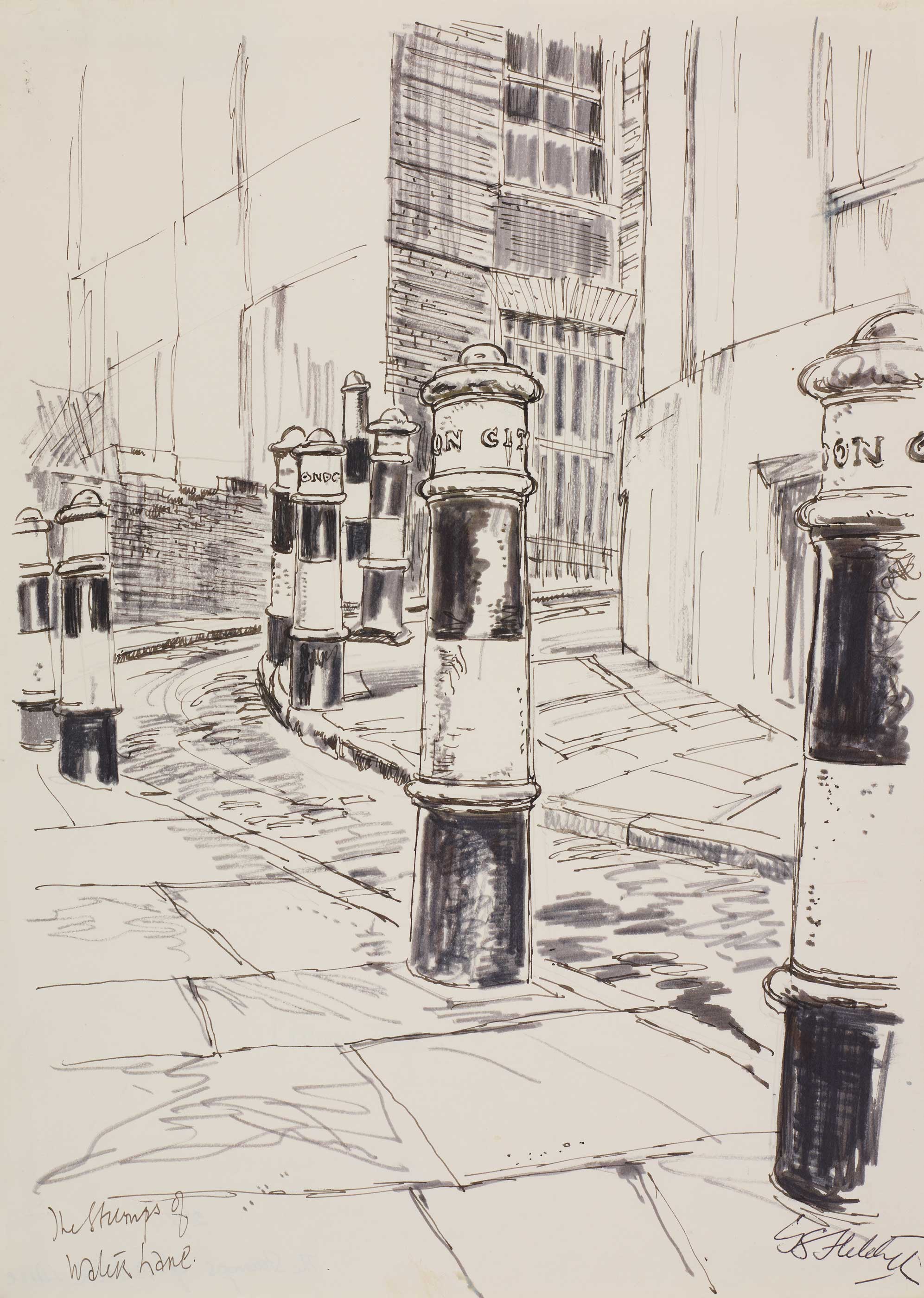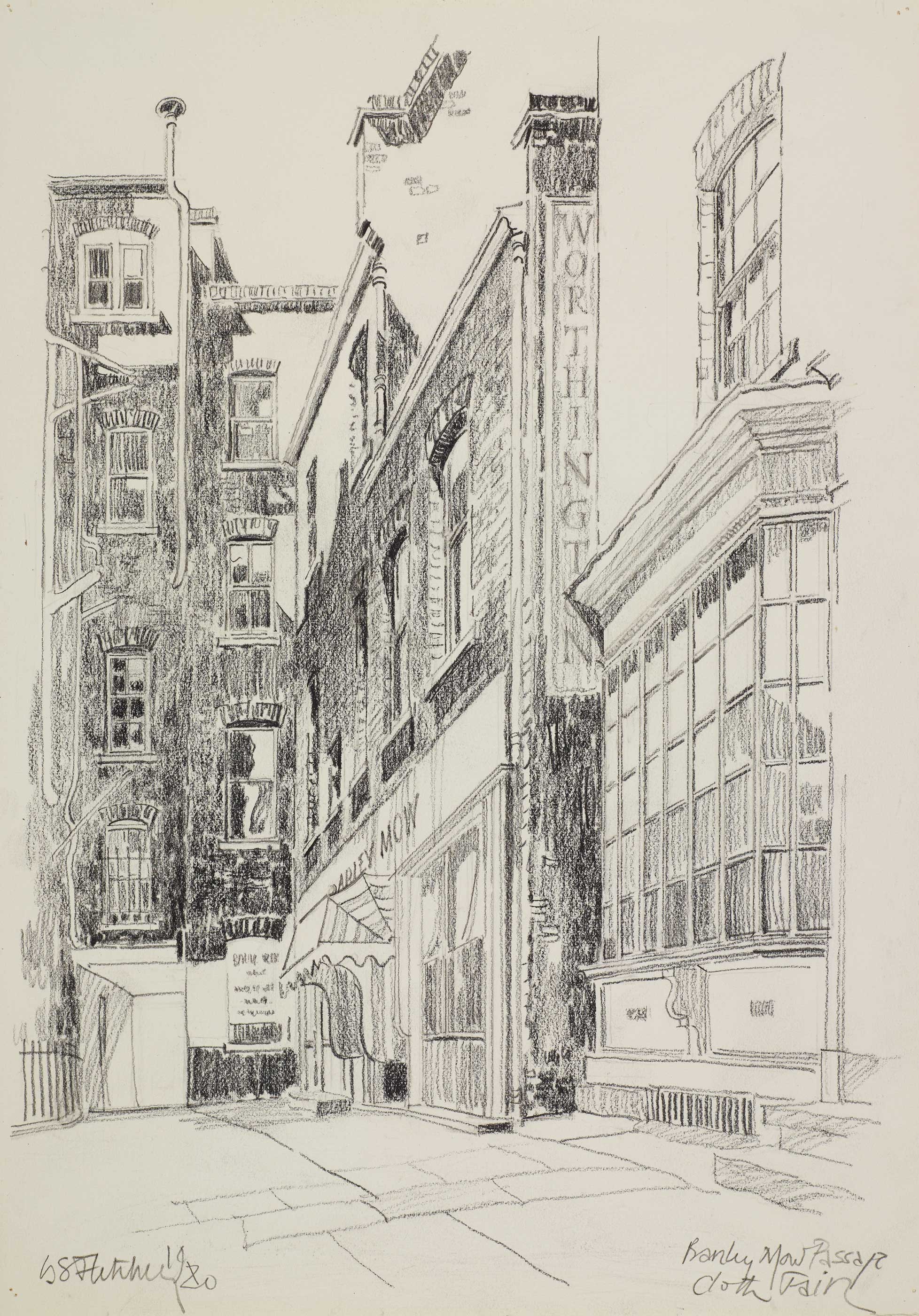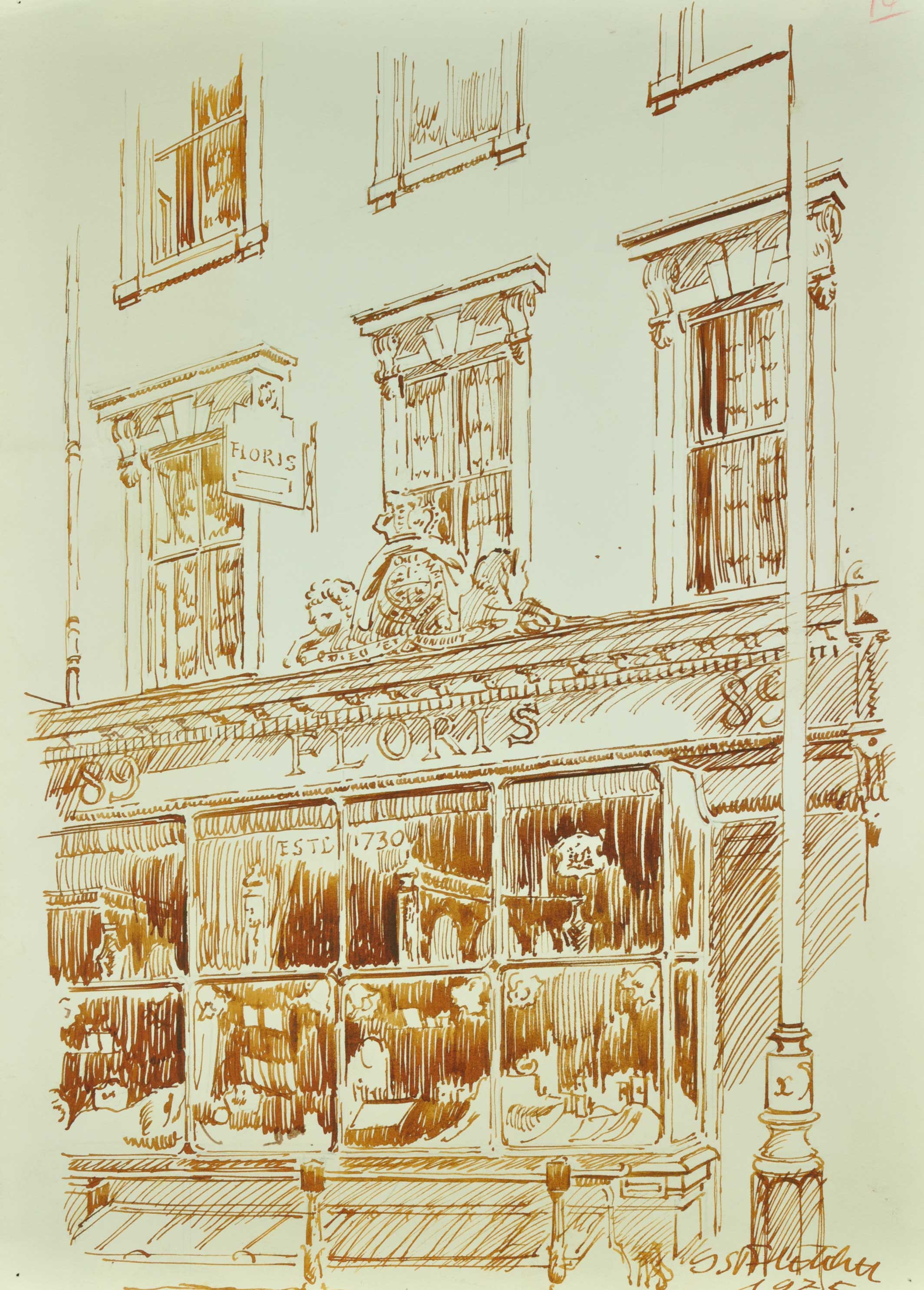Geoffrey Fletcher
It is one hundred years since the artist and writer Geoffrey Fletcher was born in Bolton, Lancashire.
His books and articles reached a peak of popularity during the 1960s to the early 1980s when ‘Geoffrey Fletcher’s London’ came to stand for a particular take on streetscape. Almost by accident he popularised a way of looking at London that concentrated on details; details of architecture - however humble, street furniture, signage and odd conjunctions, but also was highly attuned to the fleeting atmospheres and unexpected touches of beauty that might otherwise be missed.

In more than a dozen London books and countless newspapers articles (mostly for Daily Telegraph) he drew and described the sights that he ‘collected’ in his voracious explorations of the streets of London. His best-known book was, and remains, the 1962 'The London Nobody Knows'. At London Metropolitan Archives we have one of the main collections of his original works. Here Jeremy Smith talks about his friend Geoffrey Fletcher’s work as an artist, writer and campaigner.
The Student from Bolton
He came to London to study fine art at the Slade School of Art and followed it in 1950 with a studentship at the British School at Rome. But he was already hooked on London, his lifelong subject – up until his return to Bolton before his death in 2004. Alongside his studies at Slade, and studying architecture with Sir Albert Richardson at University College, he set out with characteristic energy to discover the essence of London. From his lodgings in Cartwright Gardens Bloomsbury, he rambled the streets of post-war London observing and drawing. Student social life was probably not for him. He read widely on London topography and architectural history. The works of Charles Dickens and John Ruskin in particular form the backbone of his writing and inform his enthusiasm for all things Victorian. This led him to pubs, old music halls, tea shops, dining rooms and any rich reminders of nineteenth century opulence that he could discover.
On foot in Clerkenwell
His most favoured music halls were in Camden and Islington and due to them he gained a particular bond with these areas, maintaining a special fondness for Clerkenwell and Angel – probably his favourite districts of London. He would surely be pleased to know that the best collections of his work reside in LMA and the nearby Islington Local History Centre.
In his 1990 book 'London a Private View' he wrote appreciatively of the well-proportioned terraces between Clerkenwell Green and Sadlers Wells, looking as if ‘dislocated from Bloomsbury’, and commenting on the spectral quality of winter sunshine as it lines up spectacularly to the angle of Exmouth Market (viewed from the LMA corner). He drew attention to the old Welsh dairy on Amwell Street, with its wonderful signage, commercial architecture on Bowling Green Lane, and liked to observe vestiges of ‘Little Italy’ in the streets and people of Clerkenwell. A noted connoisseur of old-style sandwich bars, he was particularly happy in the one on Clerkenwell Green (Scotti’s Snack Bar).

Fletcher would miss no connection between literature and topography. He was an expert on the London of Charles Dickens, The Daily Telegraph published his 'Pocket Guide to Dickens' London' and Hutchinson his 'The London Dickens Knew' in 1970. Arnold Bennett’s novel 'Riceyman Steps', entirely set in the vicinity of Kings Cross Road, was another of his Clerkenwell favourites (like Geoffrey, also dating from 1923).
He could be relied upon for an encyclopaedic knowledge of Victorian etched glass in the partitions of pub interiors, faded lettering on the sides of buildings or fancy ironwork such as the extraordinary patent ‘Pluto Hot Water Refreshment Lamp’ which stood for just one year,1899, in Rosebery Avenue beside Exmouth Market. This quirky object supplied, in addition to street lighting, hot drinks on demand, including tea, coffee and cocoa (upon the dropping of an appropriate coin in a slot). It is mentioned in his Finsbury chapter in 'Geoffrey Fletcher's London' (1968).
The Writer
Confronted with a stack of eighteen Geoffrey Fletcher London books it is difficult to separate Fletcher the artist from Fletcher the writer. As informative as they are atmospheric, the drawings benefit from his architectural training at UCL. His draughtsmanship was impressive to witness, being extremely swift as well as completely secure. His great gift was, as he would put it, to capture fleeting subjects ‘on the hoof’. His texts are highly individual, almost entirely unguarded and sometimes quite startlingly forthright. Partly academic, partly conversational, he is an observer of human life as much as of streetscape and is frequently depressive, either in his prognosis of the future of our townscape or the direction of travel in modern life. These characteristics, and the acuteness of his observations have given him something of a cult following. There is no other London writer quite like him.
Campaigner
Many readers came to know Fletcher through his pieces for the ‘Peterborough’ column of the Daily Telegraph. These consisted of very brief descriptions, a paragraph or two, of London buildings that had come to his notice, often because they were under threat in some planning proposal or other. When he began this series (which ran to hundreds of columns) the cause of architectural preservation was still in its infancy. Fletcher seems to have viewed his role as an antenna, raising awareness and appreciation rather than being a campaigner. To him certain buildings had such qualities that they could successfully defend themselves – and in this of course he was often bitterly disappointed. As time went by, he took on a weary cynicism, his mordant humour buoyed up by strong coffee, strong cigarettes, and iced buns.

Finding Geoffrey Fletcher
London was not his only interest. He loved Italy and Holland and made many paintings and drawings during working holidays. His 'Italian Impressions' was published in 1974, he also travelled widely in France. More than three hundred of his oil paintings, sketches and drawings are in the Guildhall Art Gallery collection. He was loyal to his native Lancashire, retiring there, and is well represented in the art galleries of Bury, Bolton, Blackburn and at Blackpool (which he loved). The Islington Local History Centre has a fine collection of his London drawings, paintings, and other materials. At LMA there are nearing two hundred drawings, mostly in pen and ink, and six sketch books. Also of course his published books and examples of his newspaper cuttings. Some of his drawings are in the UCL (Slade School) art collections, and local collections particularly Camden, Tower Hamlets and Lambeth, and in private collections.
For such a hard-working artist it is surprisingly unusual to find an original Geoffrey Fletcher work on the commercial market; even his books, despite their extensive print runs are not so often to be found in good condition.
Bibliography of London books by Geoffrey Fletcher
- The London Nobody Knows, 1962
- City Sights, 1963
- London Overlooked, 1964
- London’s River, 1965
- Pearly Kingdom, 1965
- Down Among the Meths Men, 1966
- Offbeat in London, 1966
- London’s Pavement Pounders, 1967
- Geoffrey Fletchers London, 1968
- Offbeat in the City, 1968
- London After Dark, 1969
- Changing London, 1969
- Pocket Guide to Dickens London, 1969
- The London Dickens Knew, 1970
- London Souvenirs, 1973
- Portraits of London, 1978
- London at my Feet, 1980
- London a Private View, 1990
The images in this article are reproduced by permission of the Estate of the Artist.